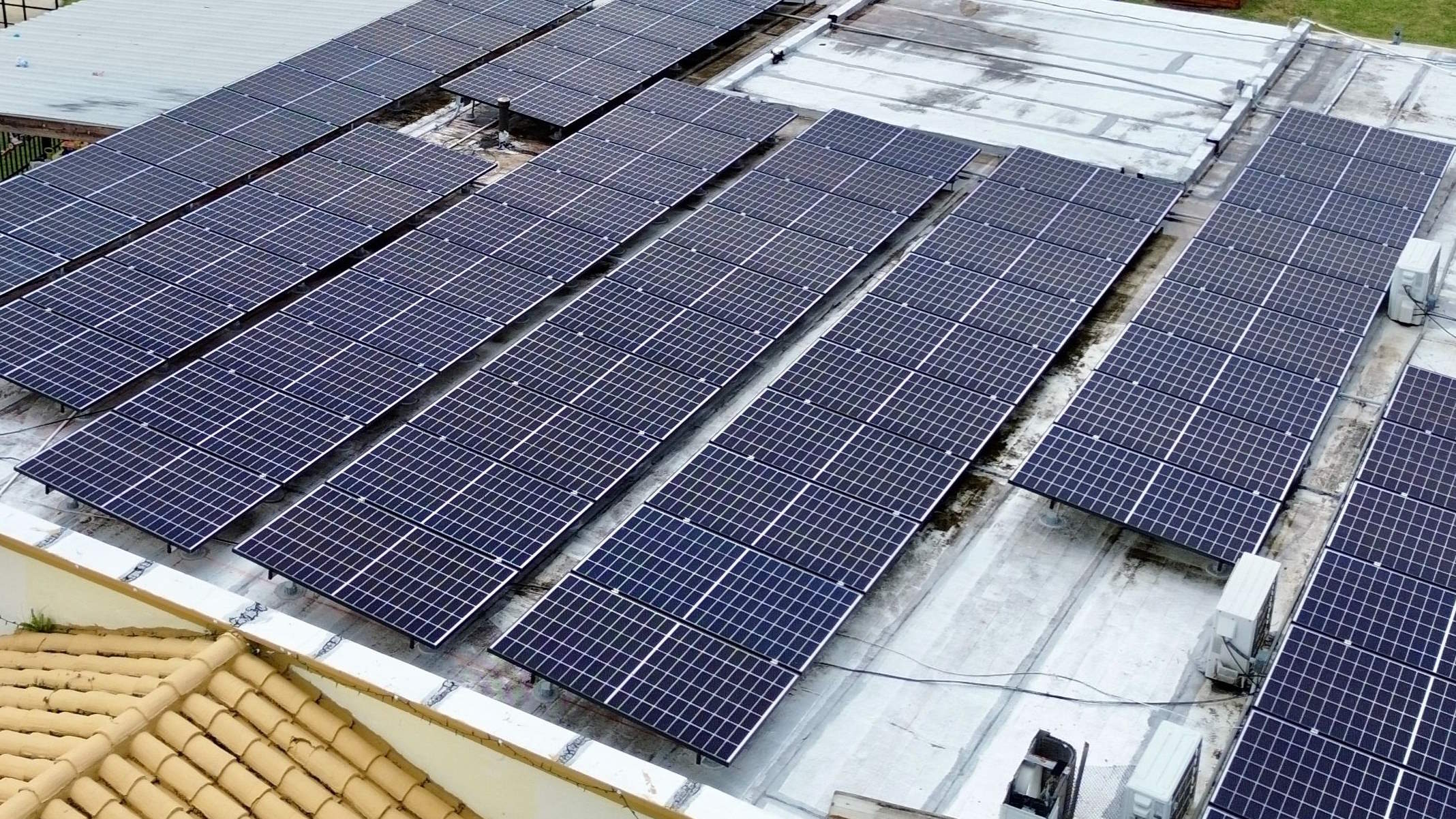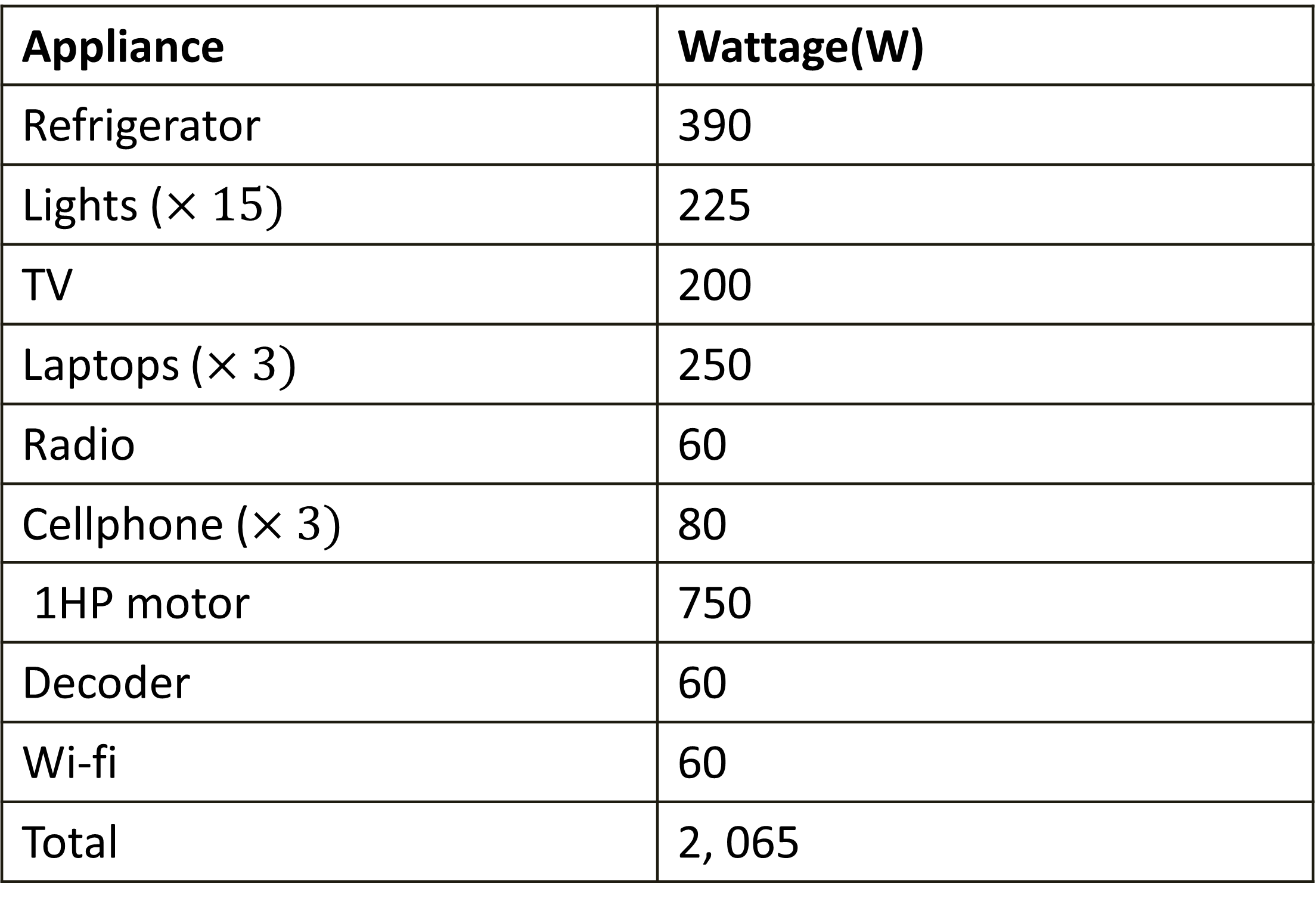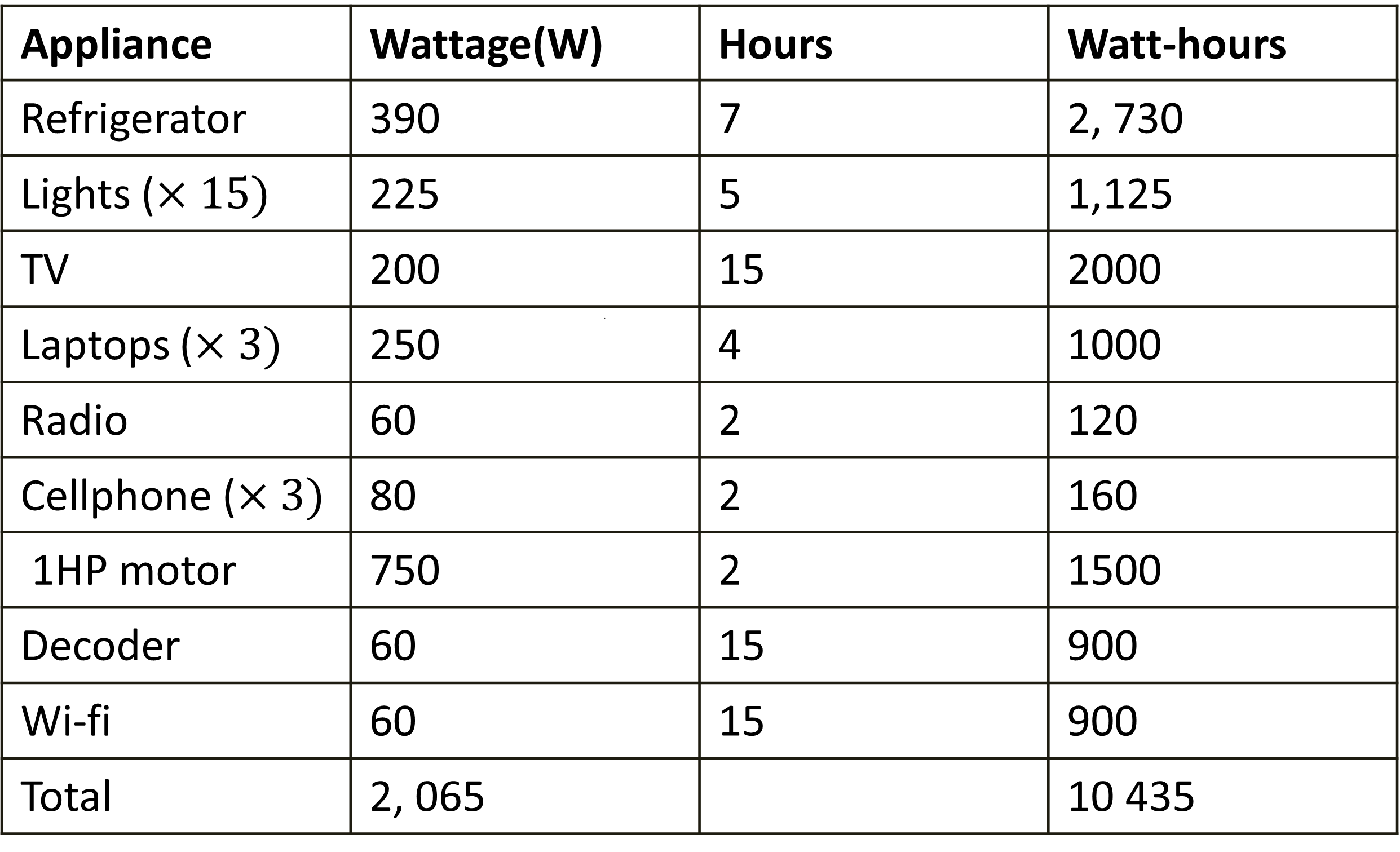How to correctly size a solar system

Solar system is a source of energy that everyone is now looking for because of its one time-cost (you don't need to pay extra money after installation), it is a clean source of energy, and can be installed at any part of the world.
It is important to know how to correctly size the solar system for both the installer and the owner of the system, because if the installation is not done well, you might end up thinking solar system is a waste source of energy.
Let us look at how to correctly size the solar system. We are going to start with load calculation, followed by battery sizing, solar panels sizing and lastly, inverter sizing.
Load Calculation
For load calculation, put down all the wattages of all your electrical gadgets that are going to be powered by the solar system in watts.
If you can't find the wattage printed on the device, multiply its current and voltage ratings to get power rating. Add up the wattages of all loads to get the total wattage of your loads.
Here is a list of the basic devices used by a simple domestic household.

Back up time
After having the total wattage of your loads, multiply the wattage of every load by the number of hours it is going to be powered per day to get your daily watt-hours.

If you want a backup time of maybe two days, then multiply the total day watt-hours by the number of days you want the system to power the load.
In most parts of the world that receive sunlight every day, there is no need to multiply by the number of days because every day your battery bank will be charged.
Battery bank calculation
Batteries have depth of discharge rating. Depth of discharge is the maximum energy a battery can discharge without damaging itself, so that it will have a long-life span.
Lithium batteries have a depth of discharge of 95% - 100%, meaning you can discharge them to 0V, whereas lead-acid batteries have a depth of discharge of 50%, meaning you only need to use half of its full charged energy.
For battery capacity sizing, take the total backup watt-hours you have calculated and add the percentage of energy that is supposed to be left in the battery bank. For lithium batteries with 100% depth of discharge, there is no need to add that percentage.
Now that you know the battery capacity you need, it is time to decide how many batteries you need for your 10 435Wh battery capacity. This depends on the battery voltage and ampere-hours you are going to use.
Batteries are rated in Volts and Ampere-hours (Ah), for example, 48V 100Ah. Multiply the battery voltage and ampere-hours to get the battery capacity in watt-hours.
48V × 100Ah = 4800Wh
Then, divide the battery capacity for your system you have calculated above by the battery's watt-hours to get the number of batteries you need.
10 435 ÷ 4800 = 2.1 batteries
Solar panels Sizing
For solar panels sizing, take the total watt-hours you have calculated and divide it by the number of hours your solar panels will be on direct sunlight.
Solar panels are not 100% efficient, most of them are said to be 80% efficient, 20% energy is wasted. Calculate the 20% wasted energy and add it.

Now that you have the total solar power you need, it is time to calculate the number of solar panels you need, which depends on the wattage of the solar panels you want to use.
For example, if you have 300W solar panels, divide the total solar power by each solar panel's wattage and get the number of solar panels you need.
1 435 ÷ 300 = 4.78 (5 solar panels)
Solar panels have a current rating called Isc (short circuit current) - which is current you get when you directly connect the negative and positive wires of a solar panel.
And a voltage rating called Voc (open circuit voltage) - which is the voltage you get when the solar panel is not connected to a load.
Voc and Isc are two important ratings used to find the total voltage, or current produced by solar panels when connected in series or in parallel.
Inverter Sizing
Inverter is a component of a solar system that converts DC from solar panels and batteries to AC. Most inverter have a high efficiency of about 90 to 95%. When sizing an inverter put efficiency into account.
When sizing an inverter, take the total load wattage, and add the percentage energy lost by an inverter when converting DC to AC based on efficiency and get the inverter size.

In inverters, we have surge power rating, which is the maximum power that the inverter can supply usually for only a short time during switching On, and continuous power rating, which is the power an inverter has to supply on a steady basis.
When selecting an inverter, take the inverter with the continuous power rating that matches with the one you have calculated. If you have loads that take too much power during switching on, you need to make sure that the inverter's surge power rating can carter for that.
If you don't find the inverter that match with the one you have calculated. Take an inverter which is just above the one you have calculated.
When connecting a battery bank to an inverter, make sure that the batteries are connected such that their voltage match with the inverter's battery voltage.
An inverter has a minimum and maximum solar panels voltage, make sure that the solar panels are wired in a way such that their voltage is not below its rated minimum input voltage or above its maximum input voltage.
If you have made it this far, thanks for reading. Please consider subscribing to our YouTube channel for more electrical tutorials.